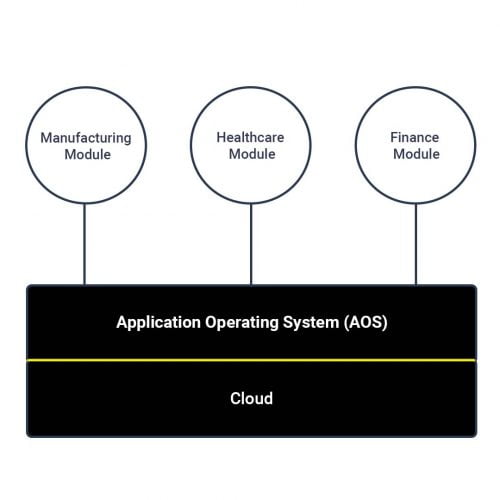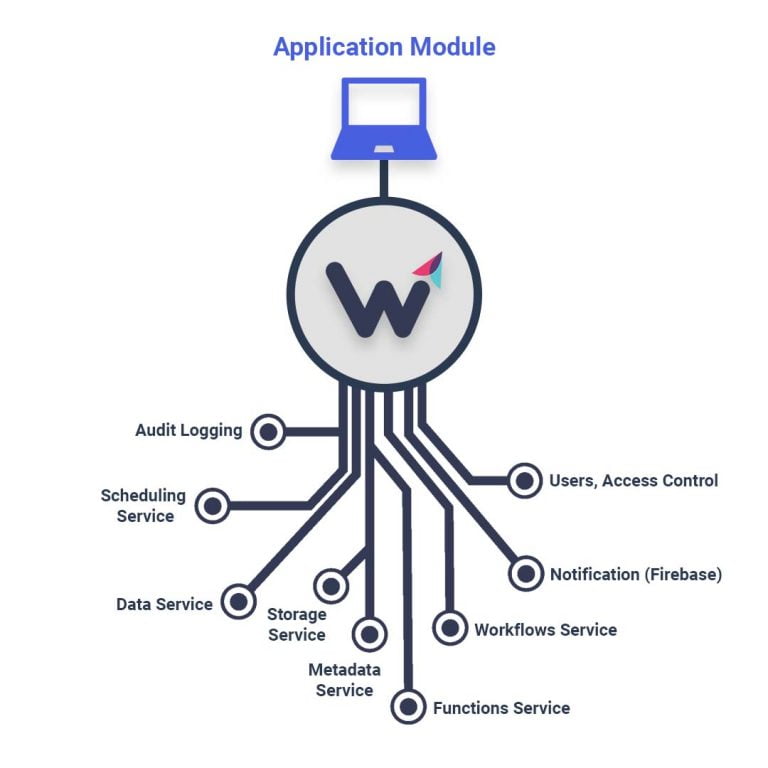Revolutionizing Cloud Application Development with AOS
If youre running a business, you know that cloud computing is the way forward. However, building and deploying cloud applications can be an extremely time- consuming, complex, and costly process that requires expert knowledge in various fields. Fortunately, Trillo has come up with a solution: the Application Operating System (AOS). With an AOS, you get a runtime engine for standard functionality, while application-specific behavior is layered on top as modules. This modular approach helps reduce development complexity, increases productivity, and promotes true cloud portability. Therefore, you can focus on building your app, without worrying about the infrastructure.
Building and deploying cloud applications without an AOS can be compared to building a house from scratch, where every single component, from the foundation to the roof, must be designed and built individually. On the other hand, using an AOS is like building a house using pre-made modular components that can be easily
assembled, customized, and reused. It streamlines the development process, reduces costs, and allows for a more efficient use of resources.
Trillo Workbench is the production-grade AOS running on Google Kubernetes Engine, offering faster development, improved scalability, and reduced complexity. Available from the Google Cloud Marketplace at an affordable subscription fee, Trillo Workbench is an ideal platform for building and deploying cloud applications.
What is an Application Operating System (AOS)
An Application Operating System (AOS) is a unique approach to building cloud applications that differs significantly from traditional methods. Rather than developing a platform layer into the application layer via CI/CD and DevOps, an AOS provides a runtime engine for standard functionality, with application-specific behavior layered on top as modules.
This modular approach hides the complexities of cloud infrastructure, promoting true portability across clouds. Developers deal only with the domain models,
application logic, workflows, and schedules collectively called application modules. Depending on the application module, the AOS acquires the personality of various applications, such as healthcare, manufacturing, or finance. The benefits of using an AOS are clear, reducing the cost of operations, increasing productivity, and improving scalability.

Additionally, an AOS-based design is more straightforward, with only 30% of the code required compared to traditional methods. While some may worry about abstraction limiting the ability to build specific use cases, there are no limitations with an AOS. Developers can access any library in the application module and implement any required functionality, offering an equivalent programming model to traditional methods.
Trillo Workbench: A Production-Grade AOS
Trillo Workbench is the production-grade version of Trillo’s AOS that delivers a robust and scalable platform for building cloud-based applications. It runs on top of Google Kubernetes Engine (GKE), enabling users to take full advantage of GKE&’s features while benefiting from Trillo’s robust application layer.
With Trillo Workbench, developers can enjoy faster development times and reduced complexity due to the modular approach that separates the application-specific behavior from the common runtime engine. This approach also enables
improved scalability and portability across clouds, making it an attractive solution for businesses of all sizes.
One of the most significant advantages of Trillo Workbench is that it is available on the Google Cloud Marketplace for an affordable subscription fee. This means businesses can quickly and easily access the benefits of Trillo’s AOS without costly infrastructure investments.

The Benefits of Using an AOS
Cost Savings: Cost Savings: Layering application modules on top of an AOS can result in significant cost savings, with estimates ranging from 60-90%. By leveraging pre-built standard services, organizations can avoid the expense of recruiting hard-to-find cloud architects and instead focus their resources on their application domain.
Faster Time to Market: An AOS speeds up the development process by providing pre-built common services, such as security, scalability, and high performance, that would otherwise take significant time and resources to build from scratch. This allows organizations to bring their products to market faster, giving them a competitive advantage.
Minimized Risk: By enabling stepwise and iterative development, an AOS reduces the risk of creating a proof of concept and evolving to an MVP and final product. This approach allows organizations to test and refine their product in a controlled manner, minimizing the risk of costly mistakes.
Future Evolution: As AOS technology continues to develop, we expect to see it become available as an abstraction layer on public clouds, as well as the development of customizable innovative application modules. AOS also has the potential to simplify the development process by providing an expressive programming model and NLP-based module descriptions that generate code.
Modular Design: AOS promotes modular design by providing pre-built common services that can be used across multiple applications. This allows organizations to easily reuse code and avoid duplicating effort, resulting in more efficient development cycles and increased portability across clouds.
Out-of-box Functionality: Internally, an AOS is a collection of services built on top of a public cloud that do the heavy lifting for application modules. These services are secure, robust, high-performance, and scalable, providing organizations with a reliable and efficient foundation for their products.
The Traditional Approach to Cloud Application Development
The traditional approach to building cloud applications can be complex and challenging. It typically involves developing large codebases, managing complex CI/CD pipelines, mastering DevOps practices, and acquiring expert knowledge of cloud architectures.
This approach can be time-consuming and expensive, requiring significant investment in infrastructure and personnel. Furthermore, it often results in a monolithic application that is difficult to scale, maintain, and update. In contrast, the
Trillo team’s approach to building cloud applications promotes modularity and simplicity, allowing faster development times, easier maintenance, and better scalability. Trillo enables developers to focus on building applications instead of managing infrastructure by leveraging abstraction layers and pre-built services.
Conclusion
Building cloud applications can be complex and expensive, with large codebases, complex CI/CD, DevOps, and expert knowledge of cloud architectures required. However, using an AOS can streamline this process, increase productivity, reduce costs, and create a more modular design.
Trillo Workbench is an excellent option for implementing an AOS, as it provides a comprehensive suite of application services and is available on the Google Cloud Marketplace for an affordable subscription fee. Using Trillo Workbench, developers can build and deploy cloud applications faster and more efficiently than traditional approaches. Try a demo today.